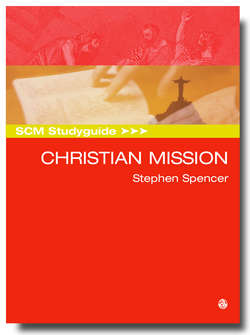Читать книгу SCM Studyguide: Christian Mission - Stephen Spencer - Страница 3
На сайте Литреса книга снята с продажи.
ОглавлениеPreface
This is not a history of missionary work or a guide to the practicalities of being a missionary but an introduction to the predominant ways the Christian community has understood and practised mission. It does this by identifying a number of ‘types’ of mission which have emerged through Christian history and which continue to be influential in different parts of the Christian world today. In adopting this approach it follows in the tradition of Max Weber (1864–1920) who developed the notion of ideal types, which he described as ‘analytical constructs that enable us to simplify a set of social relationships, to detail what is relevant and exclude misleading complexities’ (in Graham, Walton and Ward, Theological Reflection: Methods, SCM Press 2005, p. 11). A type, then, is a concept which helps to identify and understand the essential features of a more complicated phenomenon. Ernst Troeltsch used this approach to describe the life of the churches, identifying two basic types – the church type and the sect type. A number of other writers have followed his example, adapting and extending it, most recently Elaine Graham, Heather Walton and Frances Ward in relation to theological reflection (ibid., especially pp. 11–12). This book uses this approach to introduce Christian mission. It draws on the work of Hans Küng and David J. Bosch, especially on the six historical paradigms of Christian life and mission that they describe, and out of these it develops and presents six ‘types of mission’. It does this through a number of historical portraits which are indicative and exemplary of the development of each type.
This Studyguide, then, seeks to provide an overview of different approaches to mission, an overview in which contemporary views and practices can be located and understood. It does this especially for those working at undergraduate Levels 1–2, though the book is also aimed at a wider audience of any in the Church or society who wish to gain an understanding of the varied and creative ways in which the Church has engaged in mission.
Within each main chapter the book introduces a mission type in four ways. It looks at its sources within wider theological, philosophical and cultural movements. It presents a range of theologians, church leaders and movements who illustrate each one, choosing those who provide the most vivid examples. It presents other more recent examples of each type to show its continuing presence within the Christian community. Finally, it engages in some debate about which of them is the most consistent with the mission of Jesus as a predominant strand of contemporary biblical scholarship presents it.
This last task means there is an ongoing enquiry which runs through the book, an enquiry into which mission type is the most Christ-like within contemporary understanding. And the outcome of this enquiry will help those engaged in mission today to identify and inhabit that type. Some might argue that all the types should be adopted and inhabited by the contemporary Church. This may be possible at a regional or national level but at local level, where churches have limited resources and are best advised to do one thing well rather than six things poorly, choices must be made. This Studyguide is intended to help with the making of those choices. So, despite the opening sentence above, the book does have a practical application.
A student approaching the subject of missiology for the first time might feel bewildered by a subject that seems to be about every aspect of Christianity and, therefore, no aspect in particular. The first introductory part of the book seeks to prevent this by charting one of a possible number of routes into the subject. It draws on recent historical theology, systematic theology and biblical studies, arguing for a specific way of understanding and practising mission. It is intended only to open up the field of enquiry and to reflect the nature of a discipline which is currently in a provisional, unsettling but exciting place where God’s will must be sought amidst the questions and traumas of our time.
The writing of this Studyguide would not have been possible without the creative contributions of students in the Carlisle and Blackburn Diocesan Training Institute (between 1999 and 2003) and on the Northern Ordination Course (from 2003 until now) who have been members of my mission theology classes and have helped form my thinking in this broad discipline. I would like to record my immense gratitude to all of them for their contributions.
Christopher Burdon and Stephen Platten have provided invaluable help in reading drafts of different chapters and suggesting corrections and improvements. I am very grateful to them and take responsibility for all the errors and obscurities that remain in the text.
I would like to record my thanks to Barbara Laing and the editorial board at SCM Press for providing the opportunity to write this Studyguide and for the encouragement to do so.
My wife Sally has helped me understand and appreciate parts of the Christian tradition which otherwise would have remained misunderstood and unappreciated. She has also read through the entire book suggesting corrections and improvements. In gratitude for this and for much else these pages are dedicated to her with love.
